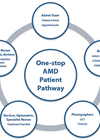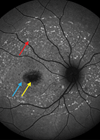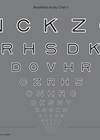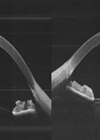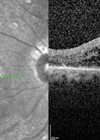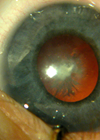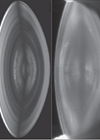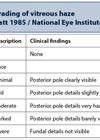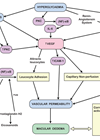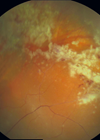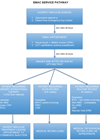Ophthalmology
Sickle cell eye disease: an overview of vitreoretinal complications and their surgical management
Sickle cell disease is the most common genetic disorder worldwide and is associated with lifelong anaemia, intermittent pain and multi-organ morbidity. Ocular involvement can be associated with significant visual impairment due to the complications of proliferative sickle retinopathy (PSR). Occasionally...
What’s new in wet AMD papers?
Paper presentations on neovascular (‘wet’) age-related macular degeneration (AMD) from the 16th European Society of Retina Specialists Congress, Copenhagen, September 2016, outline recent research directions evaluating the impact of vision loss on key health domains, patient preferences in the process...
An update on inherited retinal disorders (part 1) – overview and assessment of inherited retinal disease
Part 2 of this topic can be found here Inherited Retinal Disease (IRD) is the leading cause of blindness certification in the working age population (age 16-64 years) in England and Wales and the second most common in childhood [1]....
More sensitive visual acuity test for age-related macular degeneration
Age-related macular degeneration (AMD) is the leading cause of blindness in the developed world. Primarily associated with ageing, genetic factors and lifestyle choices such as smoking also play a contributory role. Patients with early AMD, characterised by the development of...
Optical coherence tomography – reinventing the eye examination
It has been 25 years since Huang et al. presented the first optical coherence tomography (OCT) images in Science [1]. With vast improvements in OCT technology over the years, it is now possible to acquire high-resolution cross-sectional images of the...
Management of diabetic macular oedema in vitrectomised eyes
Diabetic macular oedema (DMO) is one of the leading causes of blindness; its prevalence is on the rise with progressive increase in numbers of people suffering from diabetes. The management of DMO has evolved significantly over the past few years....
A revolution in modern genetic testing for the clinical management of ocular disease
Recent years have seen a huge increase in our understanding of the genetic factors underlying a wide variety of eye diseases. This has included common conditions such as glaucoma and age-related macular degeneration, as well as those conditions which have...
The refractive index in the eye lens – implications for clinical practice and optical design
The eye may appear to be a comparatively simple organ and yet its optical system is complex and continues to be a source of investigation and research. The major optical elements are considered to be the cornea and the lens...
Grading of ocular inflammation in uveitis: an overview
Anterior uveitis is the commonest form of uveitis, which can lead to severe morbidity if not treated appropriately [1]. Data from general ophthalmology practices suggest around 90% of uveitis encountered by comprehensive ophthalmologists is anterior uveitis [2]. Intermediate (vitreous), posterior...
The role of inflammation in the pathophysiology of DMO
Diabetic macular oedema (DMO) is a major cause of visual loss in diabetes, with a complex multifactorial pathogenesis. In the UK alone it is estimated that there are nearly 2.5 million diabetic patients aged over 12 years. Approximately 65,000 of...
A complicated case of cytomegalovirus viremia: “What would you do doctor?”
Mrs W walked gracefully into my urgent care clinic. It was another busy session and I hoped she did not have anything serious going on which might slow the clinic further. She was an elegant 72-year-old lady who seemed like...
Initiatives in macular service provision
A report from Monitor in October 2015 identifies good practices that will realise most of the potential productivity gain in elective care available to NHS hospitals. These include: stratifying patients by risk and creating low-complexity pathways for lower-risk patients (tailoring...



